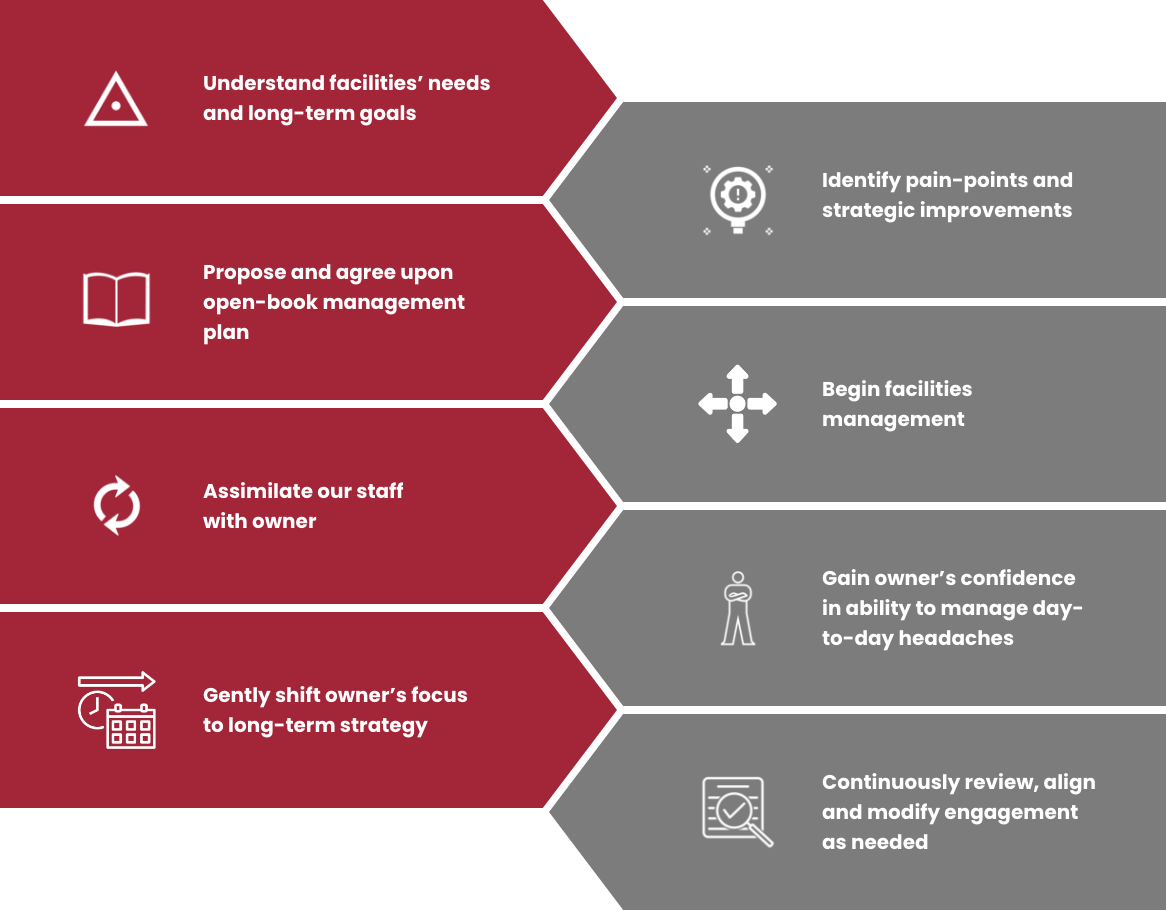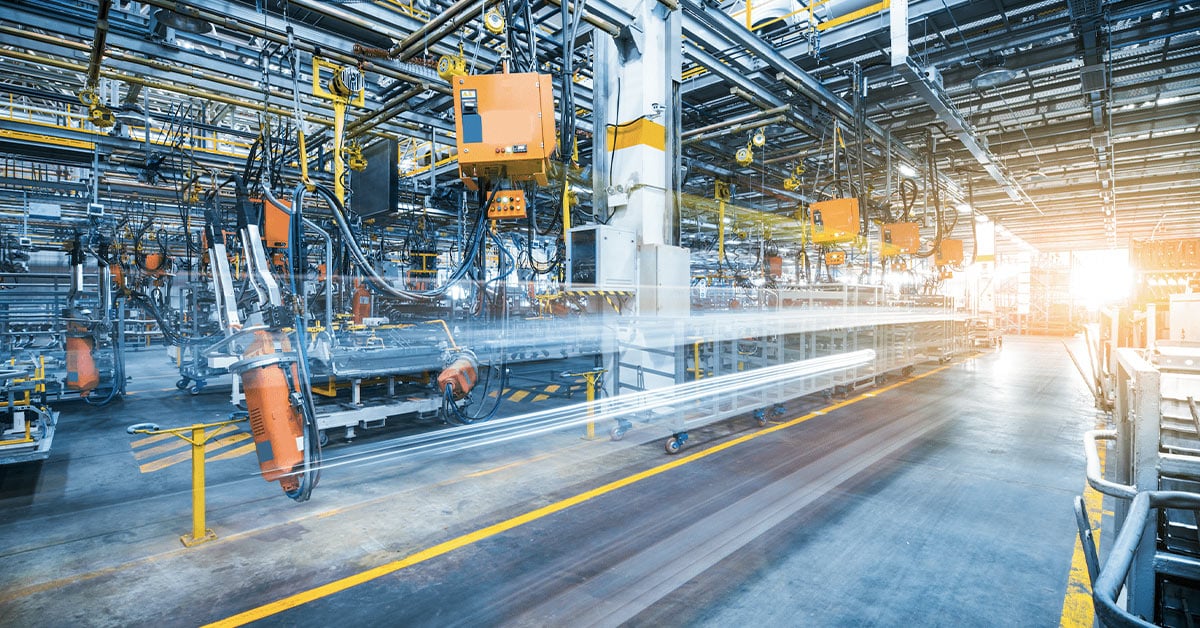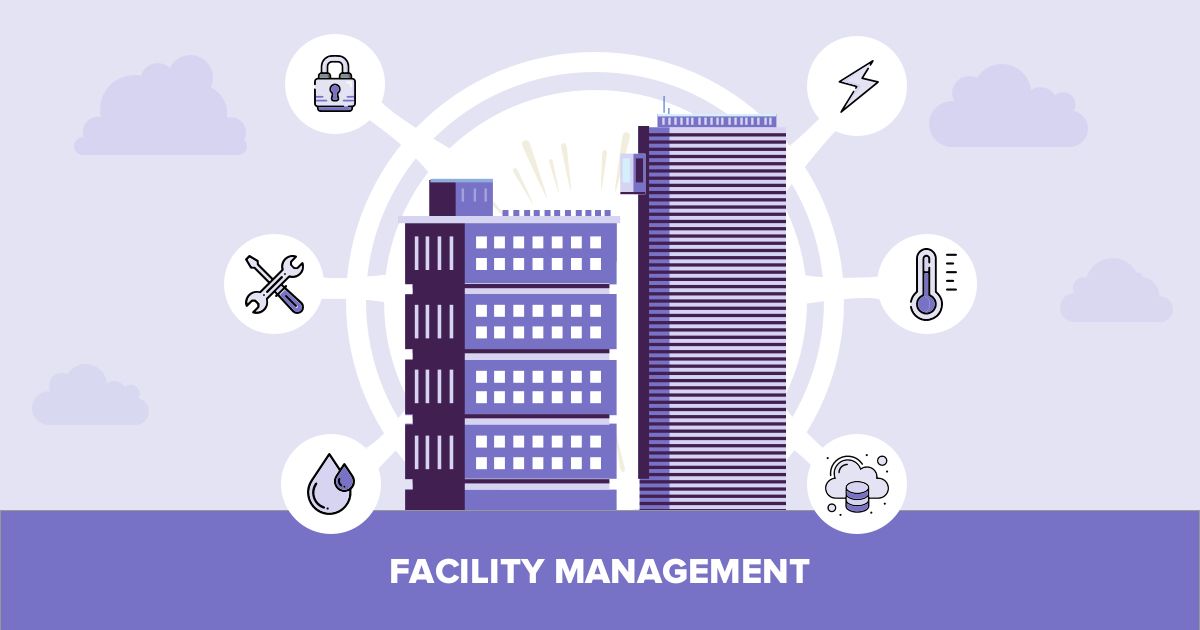Trick Patterns Forming the Future of Facility Administration in 2024
As we look ahead to 2024, the landscape of center administration is positioned for considerable improvement, driven by several essential fads. The assimilation of clever building technologies and a shift towards data-driven decision-making pledge to boost functional efficiency while focusing on sustainability in method.
Smart Building Technologies

Smart structure innovations encompass a broad array of systems, including smart lights, heating and cooling controls, and security systems. By incorporating these systems, center managers can monitor and adjust criteria in real-time, leading to substantial reductions in power waste and functional expenses. Smart sensors can discover tenancy degrees and adjust illumination and temperature level appropriately, making sure that power is just utilized when required.
Moreover, these technologies assist in boosted information collection, allowing companies to track use patterns and recognize chances for further renovations. The application of smart structure innovations not only adds to sustainability objectives but also develops healthier work atmospheres that can improve employee productivity and fulfillment.
As we relocate right into 2024, the adoption of clever building innovations will likely accelerate, showing a broader change towards even more intelligent, responsive, and lasting center management techniques.
Data-Driven Decision Making
Significantly, companies are leveraging data-driven decision making to boost facility monitoring techniques. By utilizing data analytics, facility managers can acquire actionable insights that considerably enhance operational effectiveness and resource allowance. The assimilation of sophisticated modern technologies, such as IoT sensing units and real-time surveillance systems, allows the collection of vast amounts of data on building efficiency, occupancy rates, and energy consumption.
This riches of information permits facility supervisors to identify patterns, predict upkeep demands, and proactively address problems before they intensify. For example, predictive analytics can forecast equipment failings, reducing downtime and repair service expenses. Furthermore, data visualization tools promote better interaction among stakeholders, making sure that educated choices are made collaboratively.
Furthermore, data-driven methods boost strategic preparation by enabling facility supervisors to examine the performance of present practices and make informed choices relating to investments in innovation or facilities. As companies significantly prioritize functional quality, data-driven decision making is positioned to come to be a keystone of successful center administration strategies in 2024 and past. Inevitably, the ability to take advantage of data effectively will encourage organizations to produce much more reliable, efficient, and resistant centers.
Sustainability and Eco-friendly Practices
The focus on data-driven decision making normally lines up with the growing focus on sustainability and green techniques within center management. As organizations significantly prioritize ecological duty, center supervisors are leveraging analytics to optimize resource usage, reduce waste, and decrease carbon footprints. This calculated method allows the integration of energy-efficient systems, such as LED lighting, smart HVAC controls, and renewable power sources into center procedures.
Moreover, the implementation of sustainable methods extends beyond power usage. Facility supervisors are adopting environmentally friendly products and promoting reusing initiatives to produce a round economic situation within their centers. This not just enhances the environmental account of the company yet also promotes a society of sustainability among employees.
Conformity with ecological laws is one more critical element driving the adoption of eco-friendly methods. By making use of information analytics, center supervisors can check compliance metrics and recognize areas for enhancement, ensuring adherence to worldwide and neighborhood sustainability criteria.
Hybrid Job Versions
A substantial change towards hybrid work models is improving the landscape of facility administration in 2024. This standard integrates in-office and remote job, necessitating a reevaluation of room usage, source allowance, and employee engagement strategies. Organizations are increasingly identifying the relevance of flexible workspaces that cater to varied demands and choices.
Facility managers must adjust by carrying out versatile office designs that sustain collective initiatives while giving areas for concentrated job. This includes the combination of technology to help with smooth interaction and partnership among remote and in-office workers. Smart structure options, outfitted with analytics and sensors, permit real-time tracking of area usage, allowing organizations to enhance their atmospheres successfully.
Furthermore, crossbreed job models emphasize the demand for efficient facility monitoring that focuses on employee experience. This incorporates not only innovation and space layout but likewise the advancement of policies that promote a well balanced work-life dynamic. As business navigate this shift, the duty of facility monitoring comes to be critical in creating a nimble work environment that promotes efficiency and drives organizational success. Basically, the hybrid work model is changing center monitoring, motivating a positive strategy to satisfy the evolving demands of the workforce.
Improved Occupant Wellness
As companies embrace hybrid job models, an increased emphasis on resident wellness is coming to be important to center administration approaches. Facility Management. This shift identifies that a satisfied and healthy labor force directly affects efficiency and retention prices. Center managers are now focusing on settings that advertise physical and mental wellness, integrating components such as all-natural lights, biophilic design, and accessible wellness resources

Innovation plays a critical role in this advancement. Smart structure systems can monitor environmental elements and adjust setups in real-time, web link making certain optimal convenience levels - Facility Management. In addition, feedback devices, such as occupancy sensors and blog here employee surveys, permit center managers to continuously improve wellness efforts based upon owner requirements.

Conclusion
In 2024, the future of facility management will certainly be dramatically influenced by the integration of clever building innovations and data-driven decision-making, cultivating enhanced functional performance. These fads jointly underscore the evolving landscape of facility administration in reaction to contemporary difficulties and possibilities.
Facility supervisors are advertising and embracing green materials reusing efforts to produce a circular economic situation within their centers.A substantial change towards crossbreed job designs is reshaping the landscape of facility monitoring in 2024.Additionally, crossbreed work models emphasize the demand for efficient facility management that focuses on staff member experience.As companies embrace hybrid job designs, an enhanced focus on resident wellness is ending up being important to center management try this out techniques.In 2024, the future of facility administration will certainly be significantly affected by the combination of smart structure technologies and data-driven decision-making, promoting enhanced functional efficiency.
Comments on “Facility Management Solutions-- Ensuring Security and Upkeep”